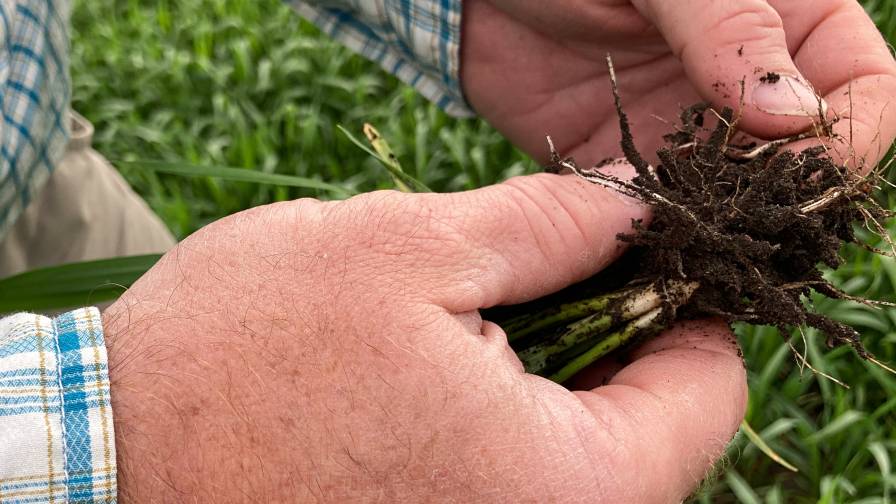How to Advance the Use of Biological Crop Protection Products and Growth Stimulants

The ag biological market is currently at an inflection point, where after years of promise, it can finally be the solution to agriculture’s main challenge: achieving more yield while reducing environmental impact.
In the Netherlands, farmers have been making headlines for large demonstrations and protests, and now control a significant number of seats in parliament as they continue to oppose legislation to make agriculture more sustainable. The farmers say that greenhouse gas-reduction proposals, such as limiting the number of animals per acre and use of chemical fertilizers, will make it difficult and not financially viable for them to produce enough food.
The tension in the Netherlands, likely to spread elsewhere as governments make more efforts to mitigate climate change, demonstrates the importance of making sure that agriculture can still function in the face of new sustainability regulations. As the world’s population grows, expected to reach 9 billion by 2050, adequate food production is a critical issue, along with reducing greenhouse gas emissions on our warming planet.
When it comes to agriculture, fertilizers and pest control play a key role in allowing efficient and affordable crop production – but these are also the same products facing scrutiny for their environmental effects. One solution is to increase the use of biological pest control and biological growth stimulants, which allow the efficient production of food while also improving soil health, sequestering carbon and reducing greenhouse gas emissions. Indeed farmers continue embracing biologicals; as the sector is growing about 13% a year, and is expected to continue at this pace over the next decade.
However, this number has the potential to be much higher. In order for these biological products to reach their potential, changes are required, including creating clear standards in the industry, more effective use of data in the testing and marketing of biologicals, and advocating for the dual use of biologicals and chemicals.
Rigorous standards are required
Despite their potential to improve sustainability while increasing crop yields, biological products face skepticism, and this skepticism has slowed adoption. This skepticism stems from the unfortunate fact that barriers to market entry and industry standards remain unclear, resulting in many products that are not proven to be effective. The first step in encouraging more use of biologicals is to set clear and consistent industry standards, including the use of data, to show that biologicals work.
Biologicals, including biopesticides, biofertilizers and bio growth stimulants made from fungi, bacteria, plants and minerals, have been available for decades. At the same time, industry standards for these products are not clear, including their categorization and the testing they complete before going to market. Even as government regulation remains varied and complex, the industry itself should lead the way for setting its own standards. Consistent standards and tests for efficacy and safety, including toxicity, would help separate effective products from those that are less effective.
These standards should be transparent and require advanced data about the performance and other aspects of products. This is very possible today, given the advances in AI and machine learning, which can demonstrate and prove how biologicals work in many different use-cases. If developers of biologicals met clear standards for certain types of data on performance, this would help ensure that farmers are investing in safe and effective methods of crop protection, and lead to more adoption of these products.
Harnessing the power of data
In addition to data playing a larger role in the testing process, data should play a more central role in the marketing of biologicals. This will lead to farmers gaining a better understanding of how these products work, and to more knowledge about how to best use them.
With many of today’s most effective biologicals designed using machine learning to best match their components with the type of plant or conditions they are applied to, there is a plethora of data available that can show exactly how these products work. This leads to clear general guidelines regarding biostimulants and biofertilizer use, and supports farmers tailoring their use for specific needs, or requesting specially-designed biological products. This is relevant as tech solutions like IoT plant and field monitoring systems are becoming more mainstream, providing farmers additional insight into the conditions and needs of their crops. Farmers can monitor how biologicals are affecting their crops and detect and predict disease outbreaks, weed growth or other challenges early-on. This clearly identifies where biologicals work best.
The promise of integrated pest management
The industry should also encourage the dual use of biologicals and chemicals, incorporating biologicals where possible as a first step in moving toward more sustainable practices. One area where this is happening is integrated pest management, which uses a combination of methods to prevent, detect and control infestations and crop damage. This process is made easier and more exact with plant and field sensors and data analytics, including AI systems, which can detect the first signs of any pests.
Because the presence of insects and other pests can be detected earlier, when their numbers are lower, that opens up the possibility for using biological, as opposed to synthetic chemical, solutions for control measures like disrupting the mating process. This type of early intervention often erases the need for synthetic chemical pesticides. There are also biological pesticides that are applicable when outbreaks are bigger, and as general preventive measures. The agricultural biologicals industry needs to be more proactive with educational efforts of how their products fit into integrated pest management, using data to show that they work, and how farmers can adopt biological-use into their current synthetic chemical use plans.
The ag biological market is currently at an inflection point, where after years of promise, it can finally be the solution to agriculture’s main challenge: achieving more yield while reducing environmental impact. With the advancement in AI and ML technologies, combined with the macro-trends that are pushing the entire industry to invest heavily in this area, ag biologicals is finally ready to become a mainstream dominant player in the agriculture inputs sector. This is a key element to securing an adequate and affordable food supply amid increasing climate challenges.






